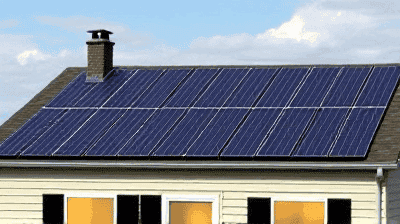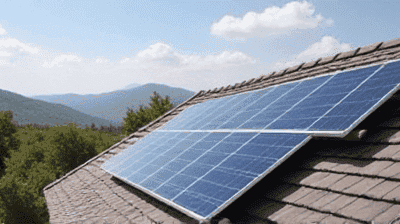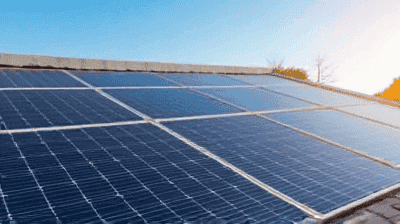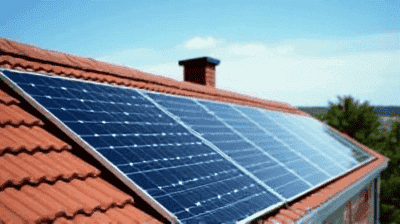
In the face of escalating threats from climate change, individuals and households have begun seeking effective ways to mitigate their environmental impact. One of the most promising solutions is harnessing solar energy through rooftop solar panels. Not only do these systems provide a clean and renewable energy source, but they also offer significant benefits for household finances by lowering electricity bills.
Rooftop solar panels generate electricity by converting sunlight into usable energy through photovoltaic (PV) technology. The fundamental process involves several steps:
Photovoltaic Cells: The solar panels are made up of numerous photovoltaic cells, typically composed of silicon. These cells absorb sunlight and generate direct current (DC) electricity.
Inverter Conversion: The DC electricity generated by the solar panels is then converted into alternating current (AC) electricity by a solar inverter, which is the form of electricity used in homes.
Net Metering: If the solar panels produce more electricity than the household consumes, the excess energy can be sent back to the grid. Many utilities offer net metering, allowing homeowners to receive credits for this excess generation, effectively lowering their electricity bills.
Grid-Tied Systems: These systems are connected to the local electricity grid. They allow homeowners to draw power from the grid when solar production is low, and export excess energy back to the grid when production is high.
Off-Grid Systems: Off-grid systems are not connected to the electricity grid and rely solely on solar power. These systems typically incorporate battery storage to provide continuous power supply, making them ideal for remote locations.
Hybrid Systems: Hybrid systems combine grid-tied and off-grid capabilities, allowing homeowners to benefit from both options. They are often equipped with battery storage to enhance energy reliability.

One of the most immediate financial benefits of installing rooftop solar panels is the reduction in electricity bills. By generating their own electricity, homeowners can decrease their reliance on utility-provided power, leading to significant savings over time.
Governments and utility companies frequently offer financial incentives to encourage the adoption of solar energy. These incentives can include:
Tax Credits: Many countries provide tax credits that cover a percentage of the installation costs. In the United States, for example, the federal solar tax credit allows homeowners to deduct a significant portion of their system cost from their federal taxes.
Grants and Rebates: Local and state governments may offer grants or rebates that help offset the cost of solar installations.
Feed-in Tariffs: Some regions provide compensation for homeowners who feed excess electricity back into the grid at a rate higher than the market price.
Studies have shown that homes equipped with solar energy systems often command higher property values compared to those without. As the demand for sustainable living increases, potential buyers may be willing to pay a premium for homes with renewable energy installations.
Electricity prices are subject to fluctuations and tend to rise over time. By generating their own power, homeowners can insulate themselves from these rising costs. Moreover, solar panels provide a hedge against volatile fossil fuel markets.
Investing in renewable energy empowers homeowners by reducing dependency on large utility companies. With this energy independence, they can take control of their energy usage and associated costs.
Rooftop solar panels play a crucial role in reducing household carbon footprints. By generating electricity from sunlight, homeowners can displace energy that would otherwise be produced from fossil fuels, leading to lower greenhouse gas emissions.
Using solar energy helps reduce the demand for fossil fuels, which have significant environmental impacts ranging from extraction to combustion. By transitioning to solar power, households contribute to the conservation of natural resources and the overall sustainability of the energy mix.
Fossil fuel combustion is a major source of air pollution, contributing to respiratory issues and other health problems. By relying on clean energy, rooftop solar installations help to decrease air pollution, fostering healthier communities.
Traditional energy production methods often consume vast amounts of water for cooling, extraction, and processing. Solar energy systems, particularly photovoltaics, require minimal water for operation, making them a more water-efficient choice.
By decentralizing energy production, rooftop solar panels contribute to a more resilient energy grid. Distributed generation reduces the strain on transmission infrastructure, especially during peak demand periods, enhancing overall grid stability.

Before installation, homeowners should assess their roofs to determine suitability for solar panels. Factors to consider include:
Roof Orientation: South-facing roofs typically receive the most sunlight, making them ideal for solar installations.
Roof Condition: Ensure the roof is in good condition and can support the weight of the solar panels.
Shading: Analyze potential shading from trees, buildings, or other structures, as this can impact solar performance.
Homeowners should research local solar installation companies and obtain quotes from multiple contractors. Comparing costs, services, and warranties will ensure a well-informed decision.
Once a contractor is selected, they will assess the site and design a custom solar system tailored to the home's energy needs. This includes determining the number of panels required, their placement, and the appropriate inverter technology.
Before installation can commence, necessary permits must be obtained from local authorities. In some cases, contractors may assist with this process. Additionally, homeowners should consider financing options—whether through loans, leases, or purchasing the system outright.
Installation typically takes one to three days, depending on the system size and complexity. Professional installers mount the solar panels, connect the inverter, and integrate the system with the home’s electrical infrastructure.
After installation, a local building inspector will review the setup to ensure compliance with safety and electrical codes. Once approved, the system is connected to the grid through the utility's net metering.
Homeowners can monitor their solar production through online platforms or mobile apps. Regular maintenance, such as cleaning panels and checking for any obstructions, ensures the system operates at optimal efficiency.
Despite the numerous benefits of rooftop solar panels, several barriers can hinder widespread adoption. Here are some common challenges and potential solutions:
While prices for solar panels have declined significantly, the initial investment remains a barrier for many households. Solutions include:
Financing Options: Offering flexible financing arrangements, such as solar loans, leases, or power purchase agreements (PPAs), can spread the costs over time.
Government and Utility Incentives: Continuing to provide financial incentives can alleviate initial costs and encourage adoption.
Many homeowners lack awareness of solar technology and its benefits. Education and outreach programs should be prioritized to raise awareness and provide accurate information on the benefits, costs, and installation processes.
Regulatory challenges at the local, state, and federal levels can dissuade potential adopters. Streamlining permitting processes, creating supportive policies, and establishing solar-friendly regulations can facilitate smoother installations.
Some individuals may worry about the appearance of solar panels on their homes. Solutions could involve:
Innovative Designs: Developing aesthetically pleasing solar panel designs or integrating them into building materials can enhance visual appeal.
Community Engagement: Facilitating community discussions regarding solar installations can help ease concerns and promote acceptance.
Renters may face challenges in adopting solar energy due to restrictions from landlords or property owners. Community solar programs can provide a solution by allowing renters to invest in shared solar projects without needing to install panels on their rental properties.

Rooftop solar panels offer an incredible opportunity for households to lower their energy bills while contributing to the global fight against climate change. By understanding how solar panels work, the financial and environmental benefits they provide, and how to navigate the installation process, individuals can make informed decisions about integrating solar energy into their homes.
As we look to the future, continued investments in solar technology, supportive policies, and community engagement will be essential for driving the widespread adoption of solar energy. By embracing renewable sources like rooftop solar, households can take significant steps toward reducing their carbon footprints, enhancing energy independence, and promoting a sustainable future for generations to come.